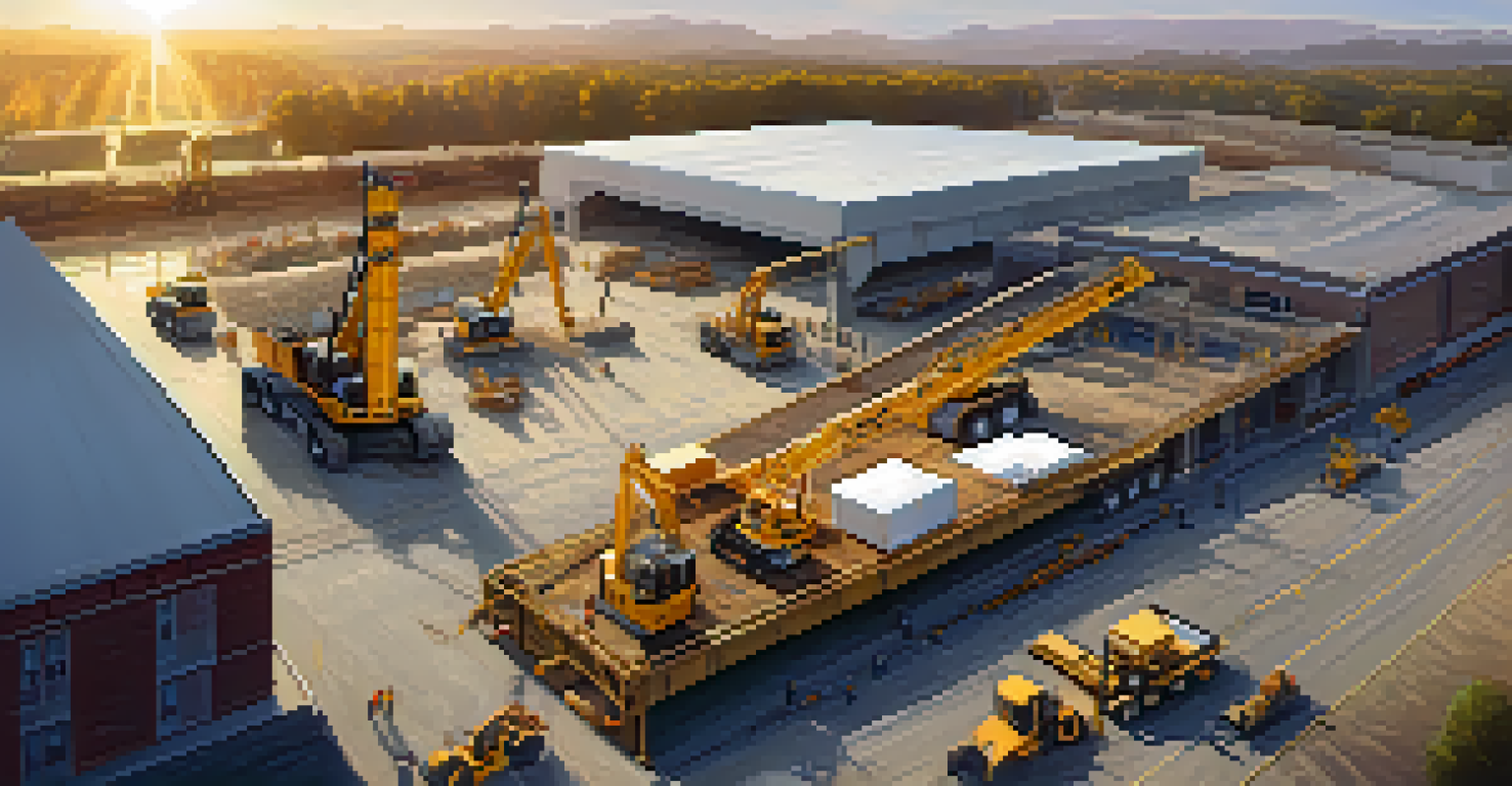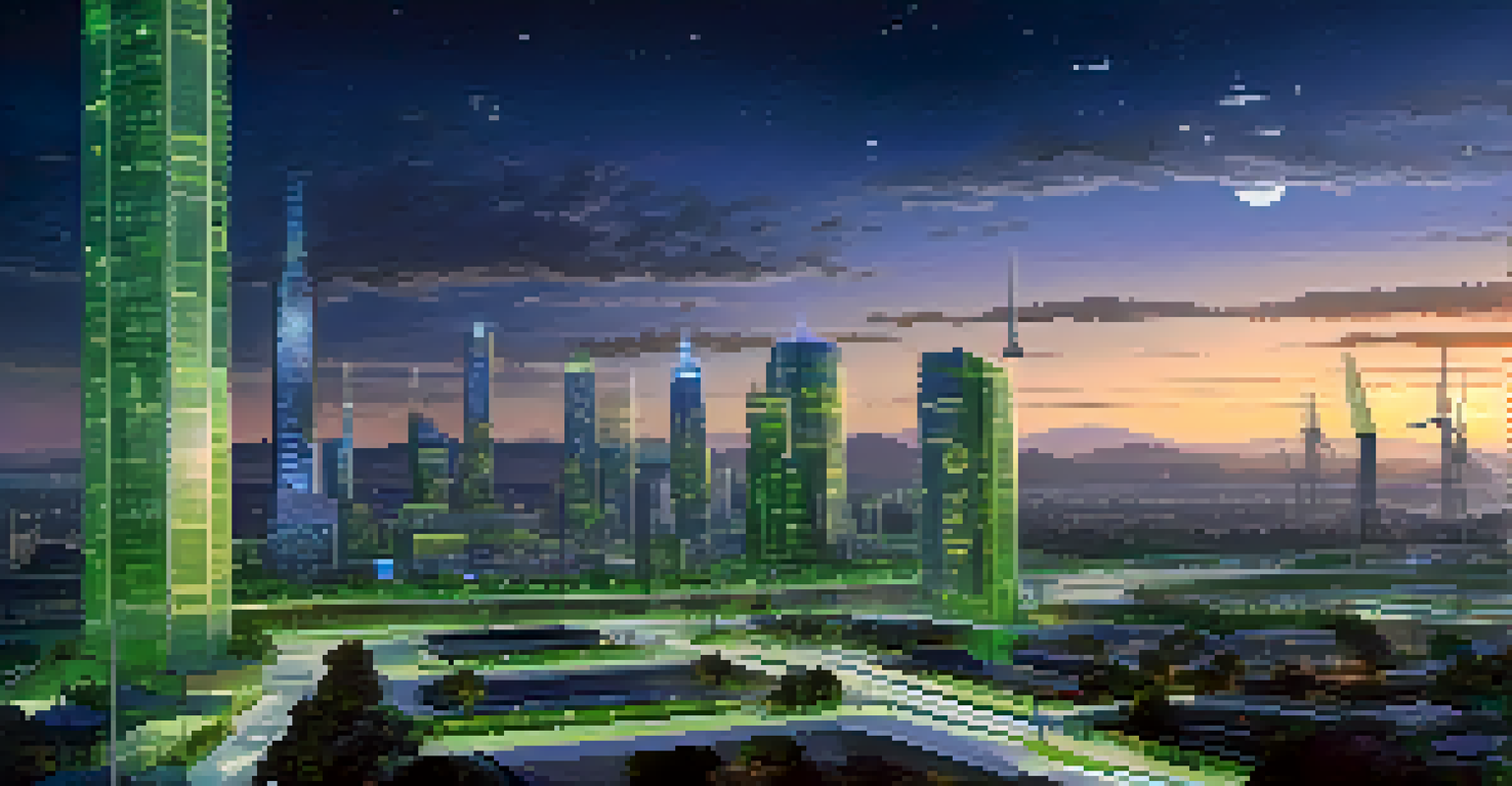Why Investing in Infrastructure is Key to Economic Growth

Understanding Infrastructure's Role in the Economy
Infrastructure encompasses the foundational systems that support an economy, such as roads, bridges, and utilities. These structures not only facilitate daily activities but also enable businesses to operate efficiently. The smoother the flow of goods and services, the more robust the economy can become.
Good infrastructure is the backbone of a strong economy.
When we think about infrastructure, it’s easy to overlook its significance until something goes wrong—like a bridge collapse or a power outage. Such events remind us how much we depend on these systems for our day-to-day lives. Strong infrastructure can lead to increased productivity, reduced transportation costs, and ultimately, greater economic output.
Investing in infrastructure is akin to planting seeds for future growth. Just as a healthy garden needs the right conditions to flourish, an economy requires reliable infrastructure to thrive. Without it, growth stalls, opportunities diminish, and communities can suffer.
Historical Evidence of Infrastructure and Growth
Throughout history, we can see a clear connection between infrastructure investment and economic growth. For instance, the construction of the interstate highway system in the United States revolutionized the movement of goods and people. It not only created jobs but also stimulated local economies along its routes.

Another example is the development of railroads in the 19th century, which opened up vast areas for commerce and trade. As railways expanded, so did the markets for farmers and manufacturers. This interconnectedness laid the groundwork for a thriving economy, illustrating how infrastructure can catalyze growth.
Infrastructure Fuels Economic Growth
Reliable infrastructure is essential for enhancing productivity, lowering costs, and ultimately driving economic output.
These historical examples remind us that infrastructure is not just about today; it's about laying the groundwork for future advancements. Each investment has the potential to unlock new economic opportunities, much like how a well-planned city can attract businesses and residents alike.
The Economic Multiplier Effect of Infrastructure Investment
Investing in infrastructure has a multiplier effect on the economy. For every dollar spent on construction, there’s often a return that exceeds that initial investment. This occurs through job creation, increased consumer spending, and enhanced business efficiency.
Infrastructure investment is not just about building roads and bridges; it's about building futures.
When new roads are built or public transit systems are enhanced, local businesses often see an uptick in customers. This increased foot traffic can lead to higher sales, more job opportunities, and a more vibrant community. It's a ripple effect that extends far beyond the initial investment.
Moreover, infrastructure investment can attract new businesses to an area, further boosting the local economy. When a region boasts reliable transportation, utilities, and services, it becomes an appealing destination for companies looking to set up shop.
Infrastructure Investment and Job Creation
One of the most tangible benefits of infrastructure investment is job creation. Construction projects require a diverse range of skills, from engineering to manual labor, which can help reduce unemployment rates in communities. These jobs not only support families but also contribute to the local economy.
Beyond direct construction jobs, infrastructure projects create ancillary jobs in sectors like manufacturing and services. For example, building a new highway may require materials produced in factories, which in turn need workers. This interconnectedness amplifies the impact of every dollar invested.
Job Creation Through Infrastructure
Investing in infrastructure not only generates direct construction jobs but also spurs employment in related sectors.
Furthermore, the jobs created by infrastructure investment often lead to long-term economic stability. As workers earn wages and spend money in their communities, the cycle of economic growth continues, fostering a healthier local economy.
The Role of Technology in Modern Infrastructure
Today's infrastructure projects increasingly incorporate technology to enhance efficiency and sustainability. Smart grids, for example, allow for better energy management, reducing waste and lowering costs. This technology not only improves service delivery but also supports environmental goals.
Additionally, innovations like autonomous vehicles and drone delivery systems are reshaping our transportation networks. These advancements promise to streamline logistics and improve accessibility, which can further stimulate economic growth. Imagine a future where goods move seamlessly, reducing delays and costs for businesses.
By leveraging technology in infrastructure development, we can create systems that are not only effective but also adaptable to future needs. This forward-thinking approach ensures that investments made today will continue to benefit the economy for years to come.
Challenges in Infrastructure Investment
Despite its benefits, infrastructure investment faces several challenges. Funding is often a significant hurdle, as large projects require substantial upfront capital. Governments may struggle to allocate resources effectively, especially in times of economic uncertainty.
Moreover, the planning and execution of infrastructure projects can be bogged down by bureaucratic red tape. Delays in approvals, environmental assessments, and community opposition can hinder progress. These challenges can lead to increased costs and prolonged timelines.
Technology Enhances Infrastructure
Modern infrastructure increasingly incorporates technology to improve efficiency, sustainability, and adaptability for future needs.
However, overcoming these obstacles is crucial for economic growth. By streamlining processes, fostering public-private partnerships, and prioritizing strategic investments, we can ensure that infrastructure development keeps pace with the needs of our society.
The Future of Infrastructure and Economic Growth
Looking ahead, the future of infrastructure will play a pivotal role in economic growth. As populations continue to rise and urban areas expand, the demand for effective infrastructure solutions will only increase. This presents an opportunity for innovative approaches to emerge, driving economic development.
Sustainable infrastructure will be at the forefront of future investments. As we become more aware of environmental issues, projects that prioritize green technologies and sustainable practices will not only meet immediate needs but also benefit future generations. This shift can create jobs in new sectors and stimulate economic resilience.

Ultimately, the commitment to investing in infrastructure today will shape the economies of tomorrow. By prioritizing these investments, we can build communities that are not only thriving but also prepared for the challenges ahead.